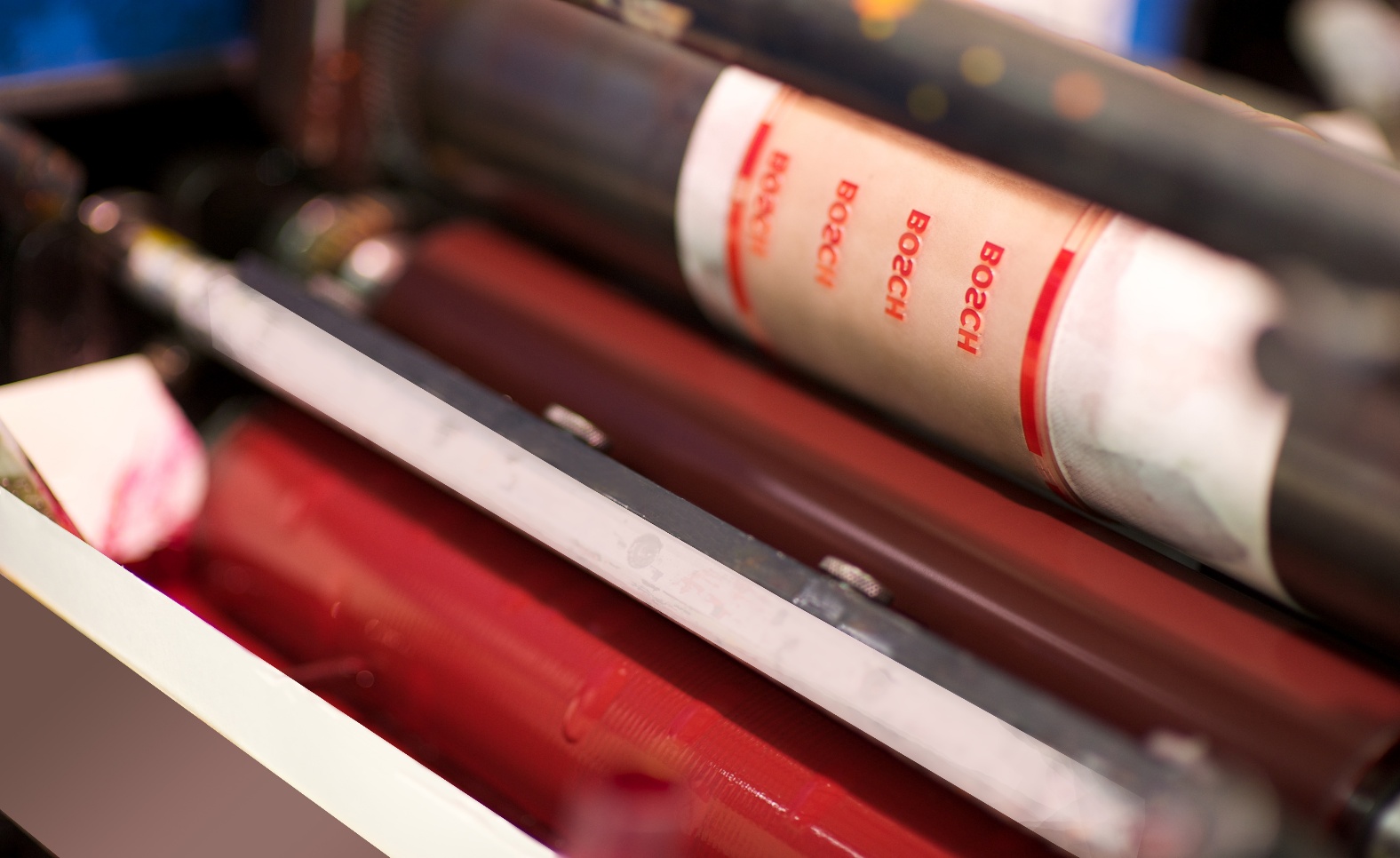Offset printing is a printing technique in which ink-stick images are pressed onto rubber sheets (also known as offset plates) first and then pressed from this rubber pad onto paper. When used with lithography, this technique avoids getting water onto the paper with the ink.

The advantages of this printing technique are:
– High image quality – sharper and cleaner than printing directly from the print on paper because the rubber pad evenly applies to the surface to be printed.
– The ability to print on many surfaces, including uneven surfaces (such as wood, fabric, metal, leather, rough paper).
– The prints are made easier.
– Prints last longer – because there is no direct contact with the surface to be printed.
Offset printing today has become the most popular printing technique in commercial printing. In printings for personal pleasure, however, it is still possible to produce a few books of high quality, using direct printing. Some people still prefer the embossed lines left on the paper from direct printing. Some of these books are even printed with prints made of lead letters, a technology of typography, a rather ancient technology.
The most important criteria to evaluate the quality of offset printing (sheets) is that the printed sheet must be the same as the sample (or test print) in color and the printed sheets must be uniform (no color fluctuations) in the entire output. print.
In fact, customers often complain that the printed product does not match the sample color and the printed sheets are uneven.
The most important factors in the printing process that affect sheet color (and therefore print quality) are:
- Ink layer thickness on paper (proportional to Whole Tone Density DV as measured by Density)
- Dot magnitude and
- Ink overlap (closely tied to the order of color overlap).
In order to assess the influence of these factors, besides visual observation, one must use measuring instruments to obtain objective evaluation, eliminating subjective illusions. The most commonly used instrument is the Density meter.
In the scope of this article, please only mention the 3rd factor, which is the issue of Color overlap printing order, its influence on print quality, which is a matter of concern to many of you.
The order of printing overprint affects ink reception and thus the output color. There is a difference when printing a single color on white paper, printing that color on a pre-sized layer of ink, or printing in 2 or 4 colors wet-overlap-wet. When printing wet – overlap – dry (ie, print multiple colors on a single color machine) and wet – overlap – wet, the ink reception has a difference that affects the print result, separate from wet – overlap – wet then The tack of the ink has a very important role, it must decrease from the first unit to the last unit.
Depending on the nature of the print job, the type of machine (single or multi-color, i.e. wet-overlap-dry, wet-overlap-wet) and the required color effect, the order of color stacking can be changed. If the job has already been preprinted, it should be timed in the correct order when the test is printed.
In countries with a developed printing industry, a Standardization measure has been proposed to eliminate the effects of color overlap printing order on printing results. Test printing and output printing are performed according to a specified standard. A uniform order of color overlapping across all printing plants allows for comparison of print quality at different mills, and ink production with diminishing adhesion can be ordered according to the standard overlapping standards. standard, to facilitate the printer.
The standard order of color overlay printing commonly used in European countries is:
- Print 4 colors wet – overlap – wet (multicolor machine)
Black – Blue – Red magenta – Yellow.
- Print 2 colors wet – overlap – wet and wet – overlap – dry:
Cyan Blue – Magenta Red -> Black – Yellow
- Print 1 color wet – overlap – dry:
Cyan green -> magenta red -> Yellow -> Black.
In our country today, the production conditions in stork printing factories are very different, especially we use many types of printing ink imported from many different countries, so there is no unified national standard. The consequences of assessing print quality depend on the subjectivity of the worker, each factory and the controversy is of course, especially about the influence on the printing results of the printing order of color overlap.
However, in the current situation before there is a unified national standard, we can standardize the Color Overlapping Order at each factory (the most convenient way is probably to use the Color Overlapping Order). standards that advanced printing industrial countries are applying, before we research to find the right standard for us), discuss with printing material companies to order standard ink with the following properties. , especially the separation and adhesion properties are consistent with the factory’s standard color overlapping order. Doing this we eliminate an important factor affecting print quality to stabilize other factors.
Standardizing the offset printing method is an inevitable trend, because only then can we stabilize the print quality. Standardized measures at the stages of film review, exposure, proofing and output printing facilitate the coordination of stages, eliminating errors from the beginning for consistently high print quality. Right now we need to prepare the conditions to be able to move towards standardization of offset printing method, first of all, to improve the understanding of quality, quality management and use of measurement techniques in the industry. print

 Hotline: 0868 579 602
Hotline: 0868 579 602